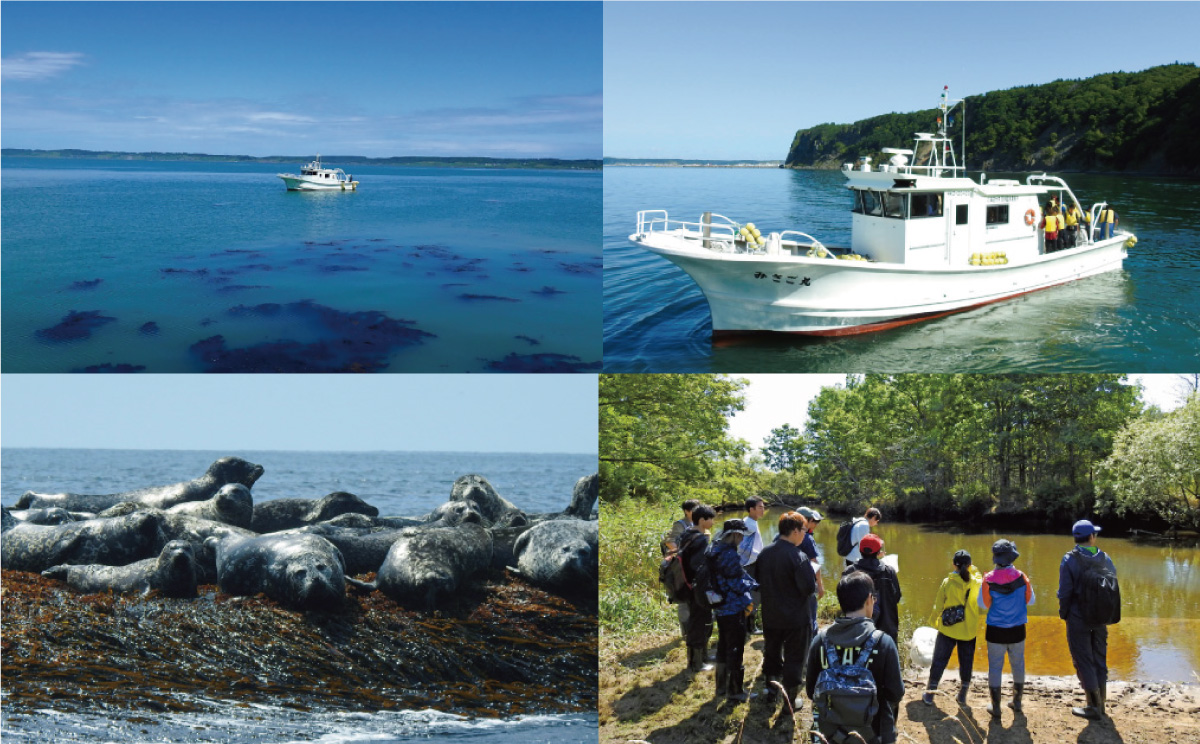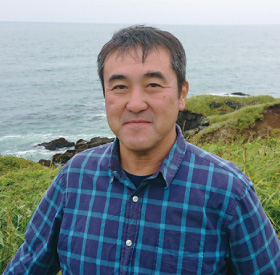- Announcements for middle and high school students
- Information for Middle and High School Researchers
- Information for Teachers
The ocean is the door to the world
2020.10.08
Field Science Center for Northern Biosphere, Hokkaido University
What kind of place comes to mind when you hear the word "ocean"? Do you imagine a tropical sea with a blue sky, white clouds, and the sun shining beneath it? Or perhaps a beach like the Sea of Japan, with its rough waves lapping against the shore? These fields are completely different from each other, but they are all undoubtedly oceans, and they are connected to each other. In this interview, we spoke with Professor Masahiro Nakaoka of Hokkaido University's Field Science Center for Northern Biosphere, Atsugishi Coastal Research Station, who says that the appeal of marine research is that it allows him to conduct research with an international flavor while looking at the local ocean.


Hokkaido University Field Science Center for Northern Biosphere Atsugishi Coastal Research Station
Professor Masahiro Nakaoka
Knowing the marine forest and its ecosystem
Atsugishi is located in the eastern part of Hokkaido, about 40 km east of Kushiro. The sea in the vicinity is strongly influenced by the Kurushima Current (Oyashio), which is a cold current, and biota unique to the cold current region, such as seals, can be seen. One of the characteristics of the sea is the vast seagrass beds near the seaside experimental station, and the sea is dark blue with deep green tints.
One of the studies that Mr. Nakaoka conducts here is the ecology of eelgrass beds. Eelgrass is a type of seed plant that is distributed along the coasts of a wide range of ocean areas, and places where it grows in abundance like grasslands are called eelgrass beds. Eelgrass beds, also known as "cradles of the sea," are important habitats and breeding grounds for many living creatures in the world's oceans, supporting the biodiversity of the oceans. On the other hand, over the long term, the number of amamoebae has been declining worldwide. The causes of this decline range from localized problems such as land reclamation and deteriorating water quality in incoming rivers to global-scale problems such as rising water temperatures and changes in climate and ocean currents. In cooperation with overseas teams, Nakaoka's team is investigating changes in biota not only in Atsukishi, but also in eelgrass beds in Southeast Asia, the U.S., and Europe.
From Atsugishi to the World
The Atsugishi-Rinkai Research Institute is also focusing on ocean acidification as a long-term research project. We often hear that the pH of seawater is decreasing, affecting corals and other organisms. However, it is not that simple. For example, the amount of photosynthesis in the ocean affects the CO2 concentration, so the pH level rises during the day and summer and falls at night and in winter. Furthermore, it varies between coastal and offshore areas, where the inflow of rivers affects the pH, and also depends on the temperature of the sea water. The world's oceans are not becoming more acidic uniformly, and the situation differs depending on the region and biota. Under the scenario with the highest increase in atmospheric CO2 concentration, the ocean, which currently has a pH of about 8.1, is expected to drop to a pH of about 7.8 by 2100. How will this change affect living organisms? We plan to conduct experiments to determine the impact on the growth of oysters and other organisms," Nakaoka said.
In addition, in recent years, the company has been involved in research on microplastics. The effects of microplastics, which have become a global problem, are being actively investigated jointly by research institutes in various countries. In the process, they found that the effect of inhibiting the feeding behavior of shellfish differed between Atsukishi and Indonesia, and hypothesized that water temperature might be related, leading them to conduct experiments at different temperatures around the world. While research in the ocean has the common goal of understanding the relationship between climate and ecosystems and the effects of microplastics on living organisms, there are also differences depending on the ocean area. By taking advantage of each location to conduct field research and cooperate internationally, we can gradually learn more about the global ocean as a whole.
Come on, let's go to the sea.
The word "ocean" includes a wide variety of marine environments, such as rocky shores, seaweed beds, shallow waters, and deep waters. When one considers the influence of ocean currents and climatic differences in addition to the above, the ocean is truly diverse. Although all of the world's oceans are connected, there are surely no two environments in the world that are the same as the local ocean. Many people may take this for granted, but I suspect that few people actually realize it.
Several times a year, the Atsugishi-Rinkai Experiment Station takes elementary and junior high school students out to sea for events and classes to observe coastal organisms. Some of the participants are fishermen's children, and Mr. Nakaoka hopes that they will learn through hands-on experience that the marine ecosystem is supported by the surrounding environment, including mountains and rivers, and that they will become environmentally conscious fishermen.
The ocean is shown in beautiful photographs and videos. While this is a way to convey the beauty of nature to as many people as possible, it is also a tool that makes people think they are familiar with it and have experienced it. First, let's visit the sea. Take a peek at the tide pools on the beach. Turn over a stone. Just by doing that, you will be able to sense a small amount of biodiversity. And it is literally connected to the world.
(Text by Yoshio Akiyama)
Would you like to work outdoors?
I want to conduct educational activities in the outdoors, but I don't have a place to do it. Do not know what to do. Safety is a concern. Financial difficulties. Many teachers may have concerns such as: - lack of space, - lack of knowledge of what to do, - safety concerns, - financial difficulties, and so on. At LIVERNESS, we are developing an outdoor program for students that addresses these concerns. If you are interested, please contact the person in charge. Please feel free to contact us if you are interested in outdoor education or field research.
contact information (for inquiries) (e.g. corporate phone number)
Contact person: Akiyama, Liberace Corporation 03-5227-4198/[email protected]
*Reprinted from "Education Support vol. 46

